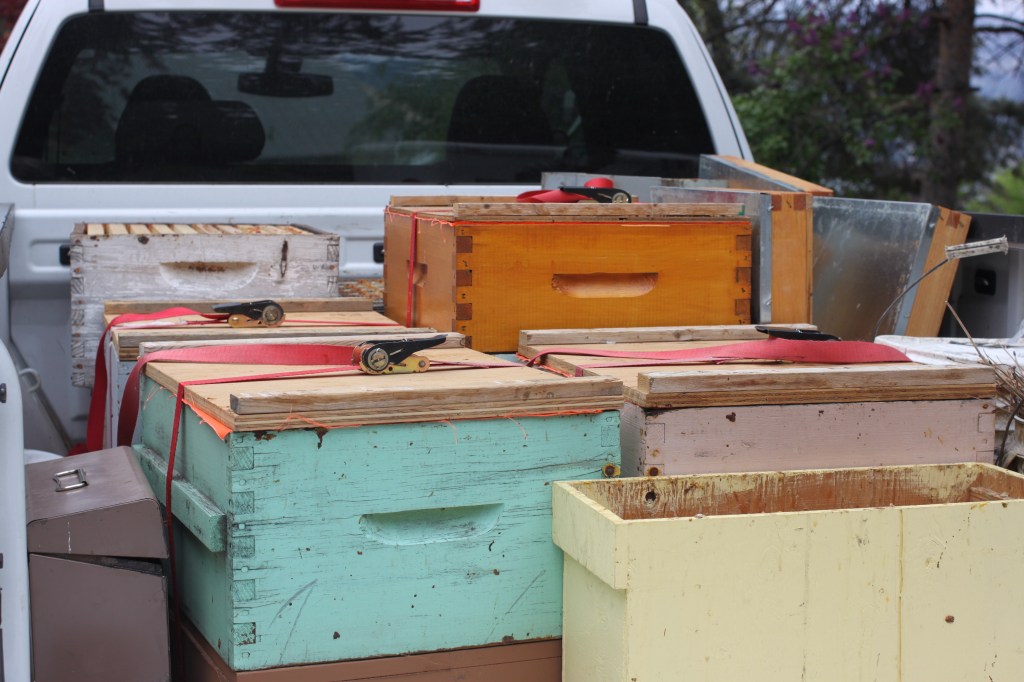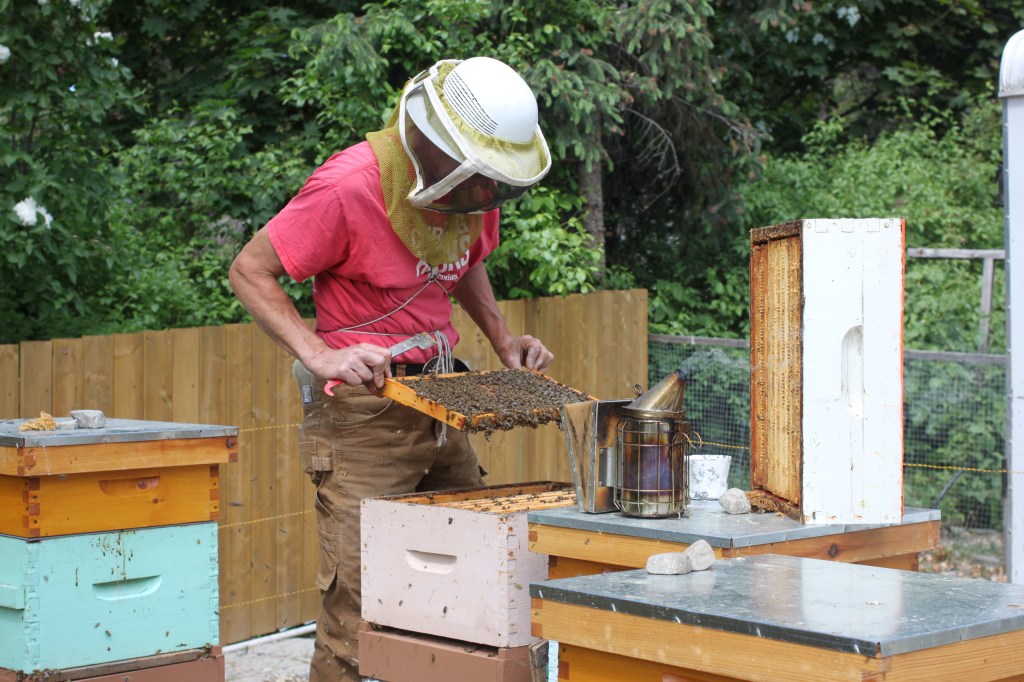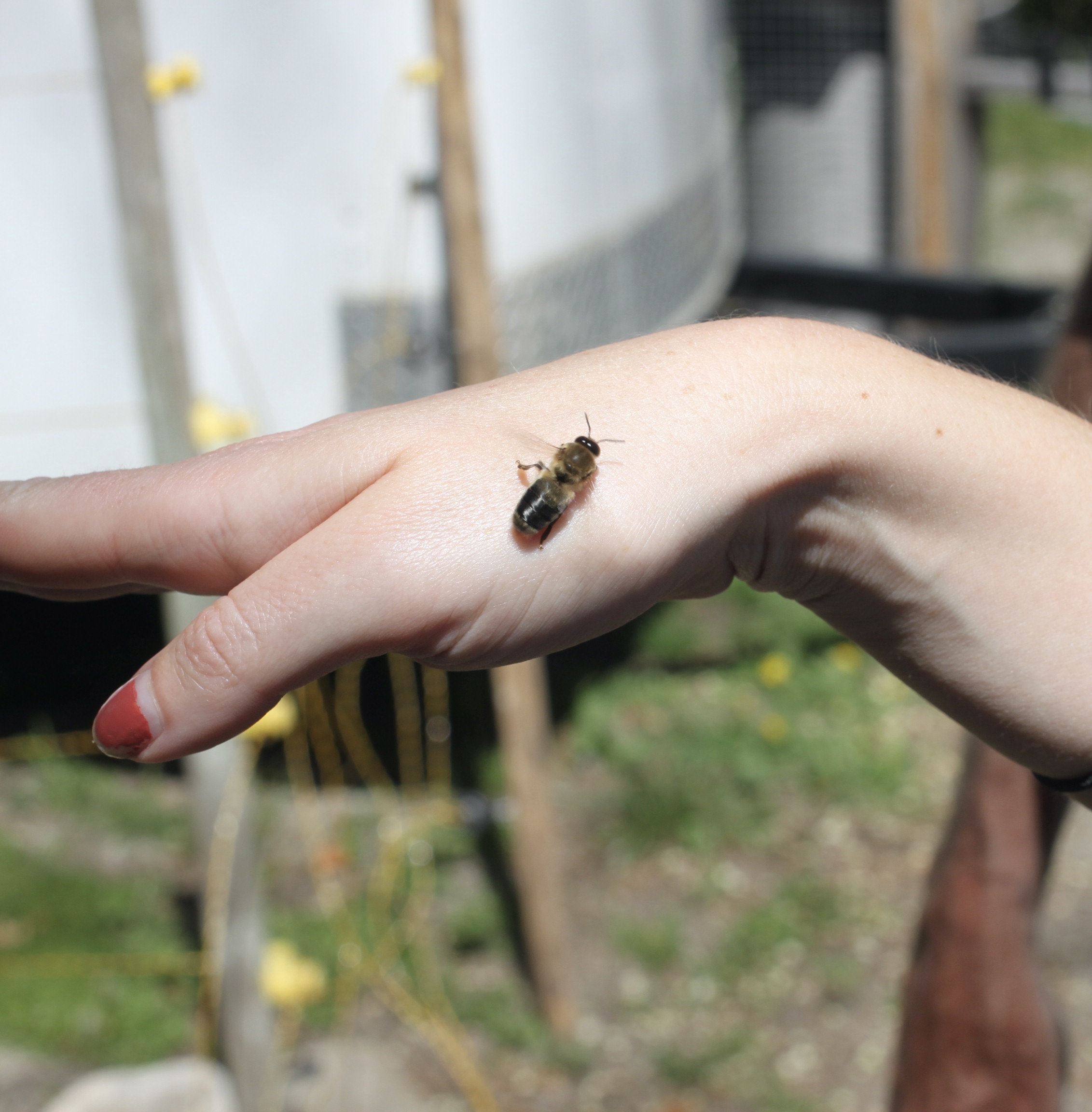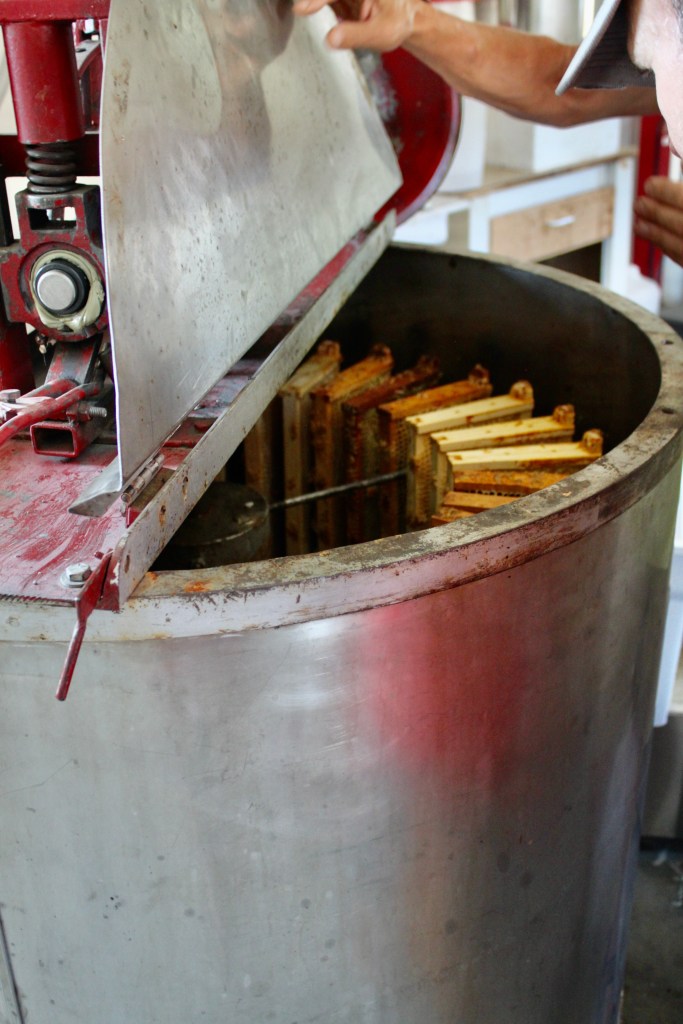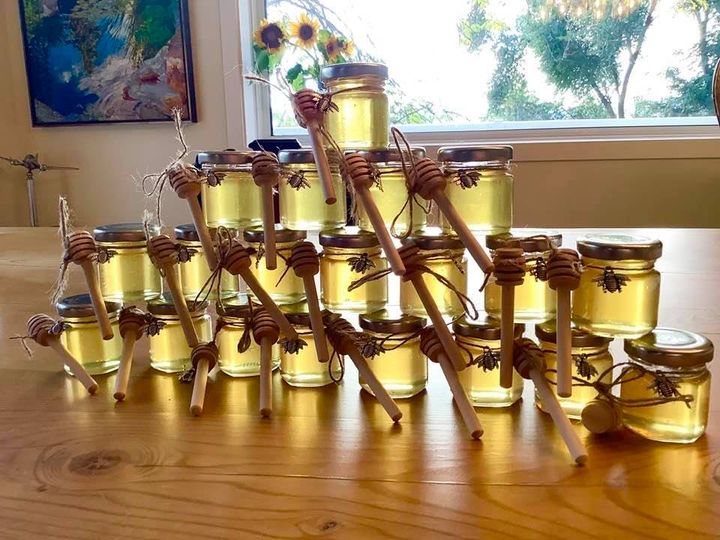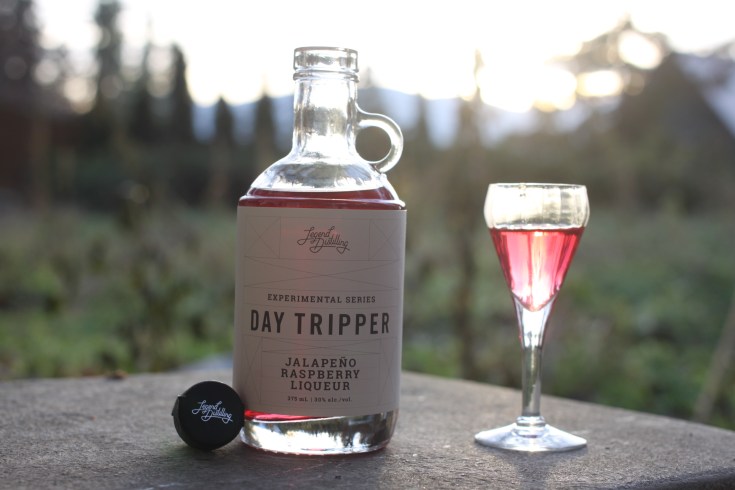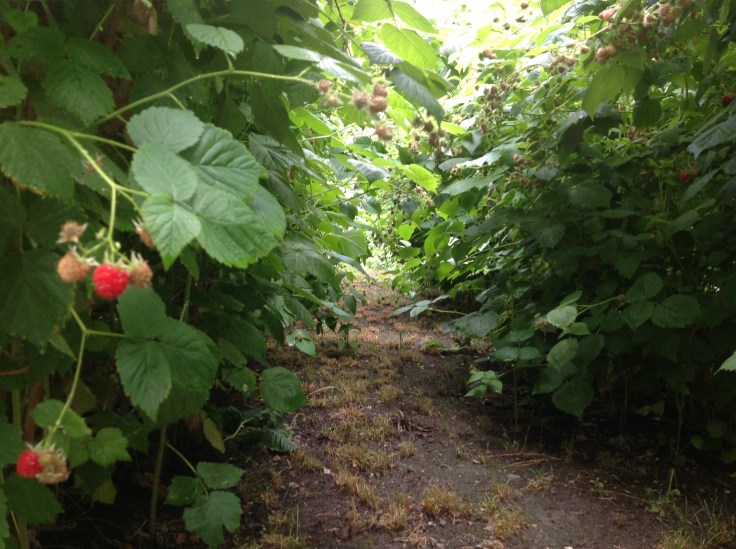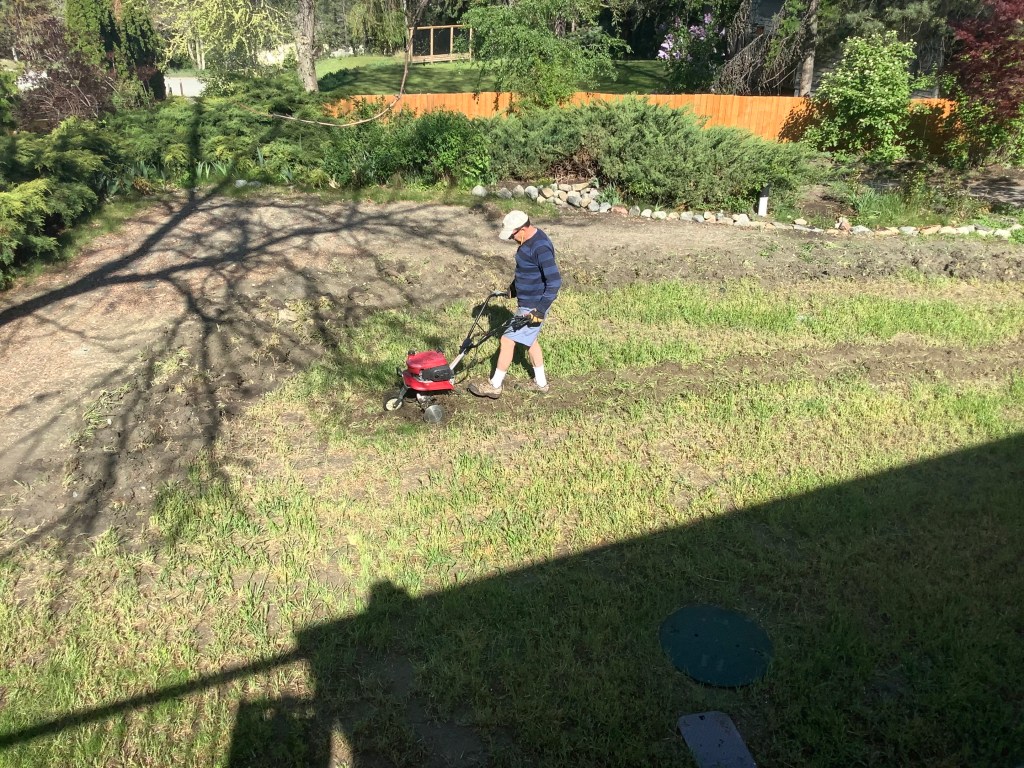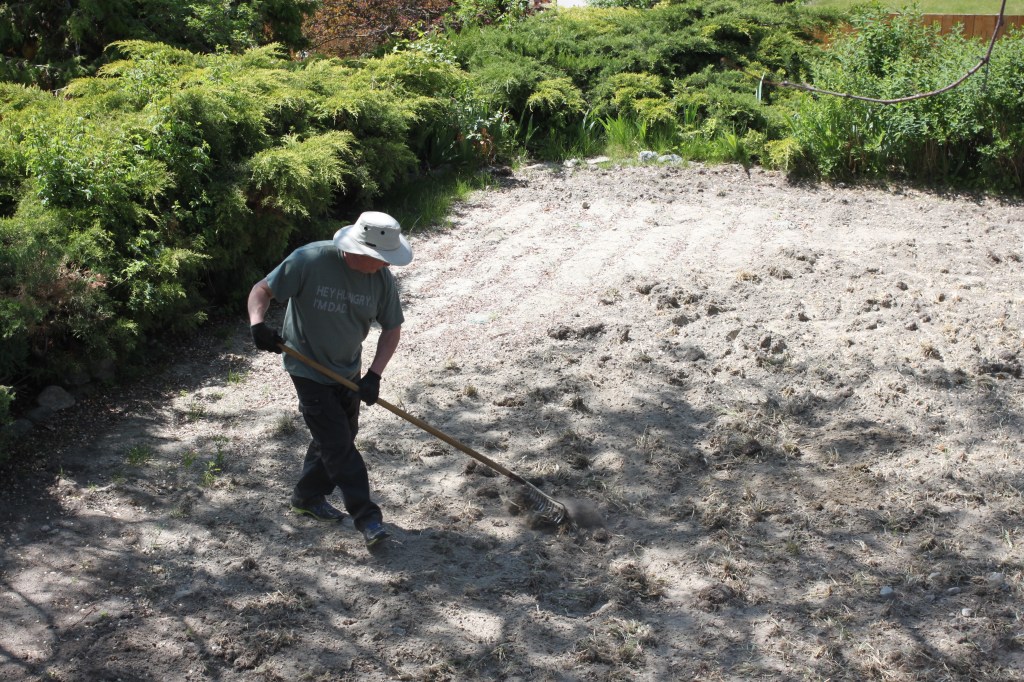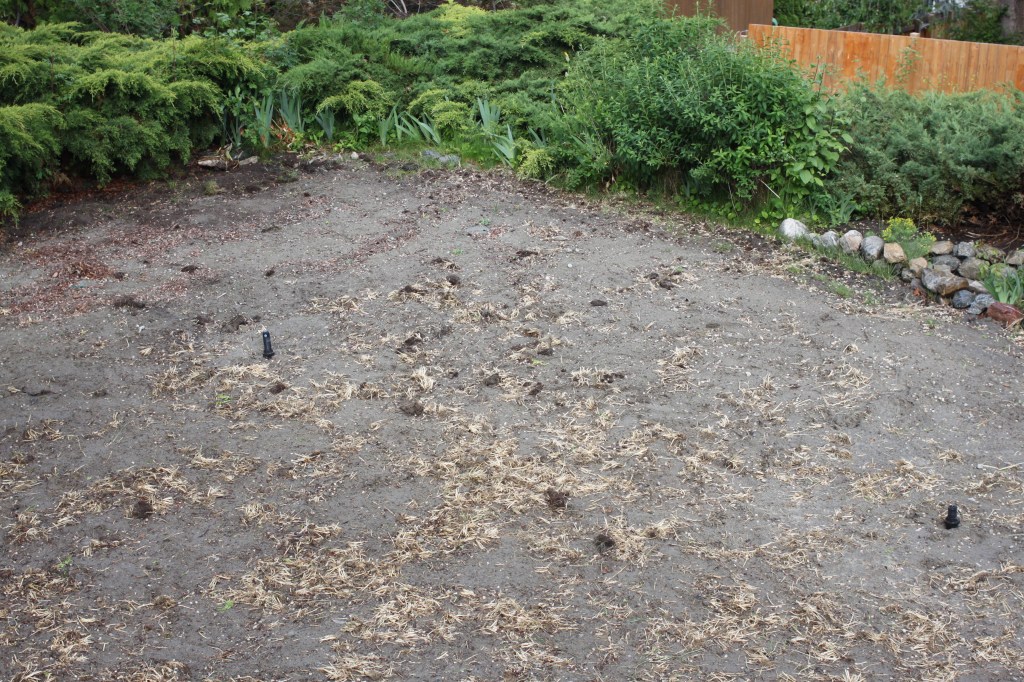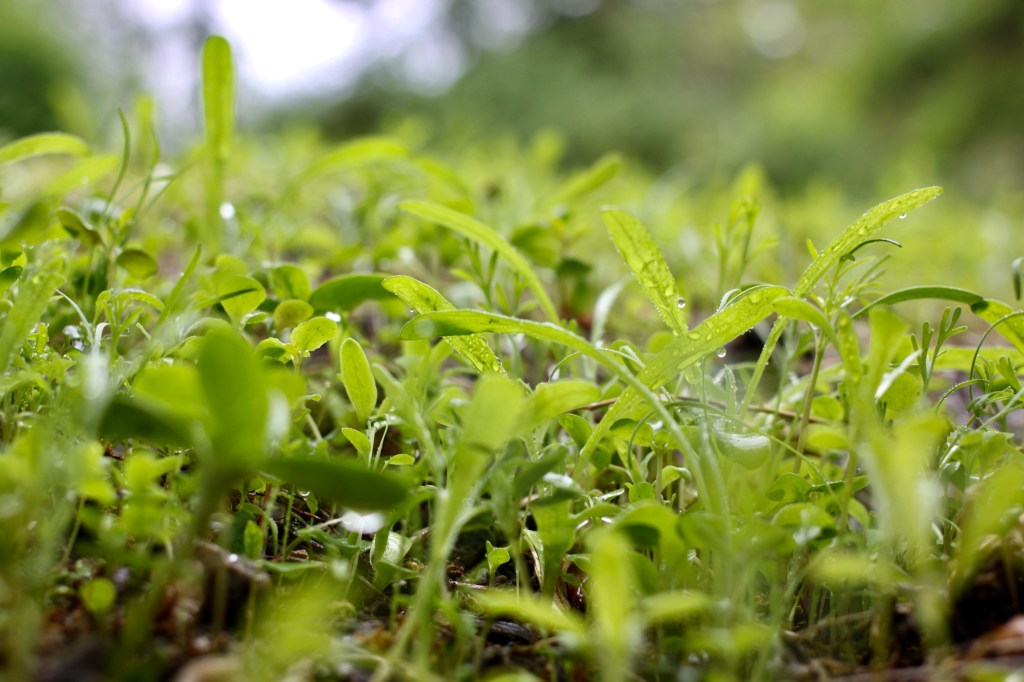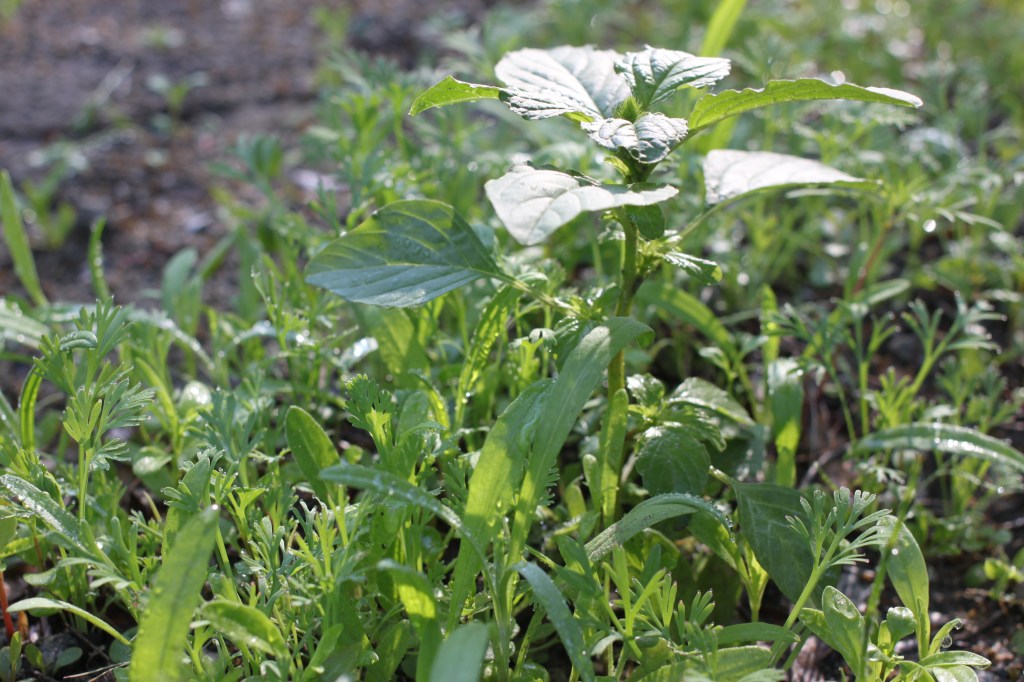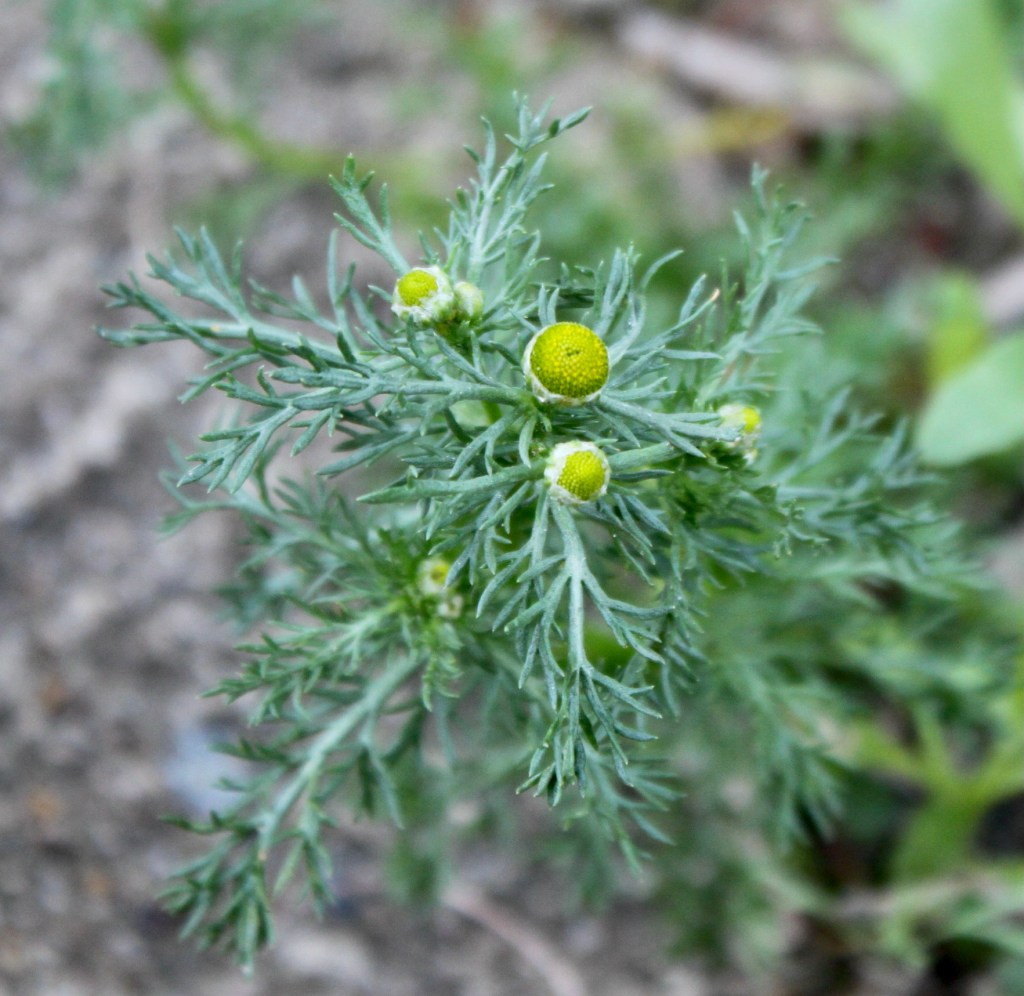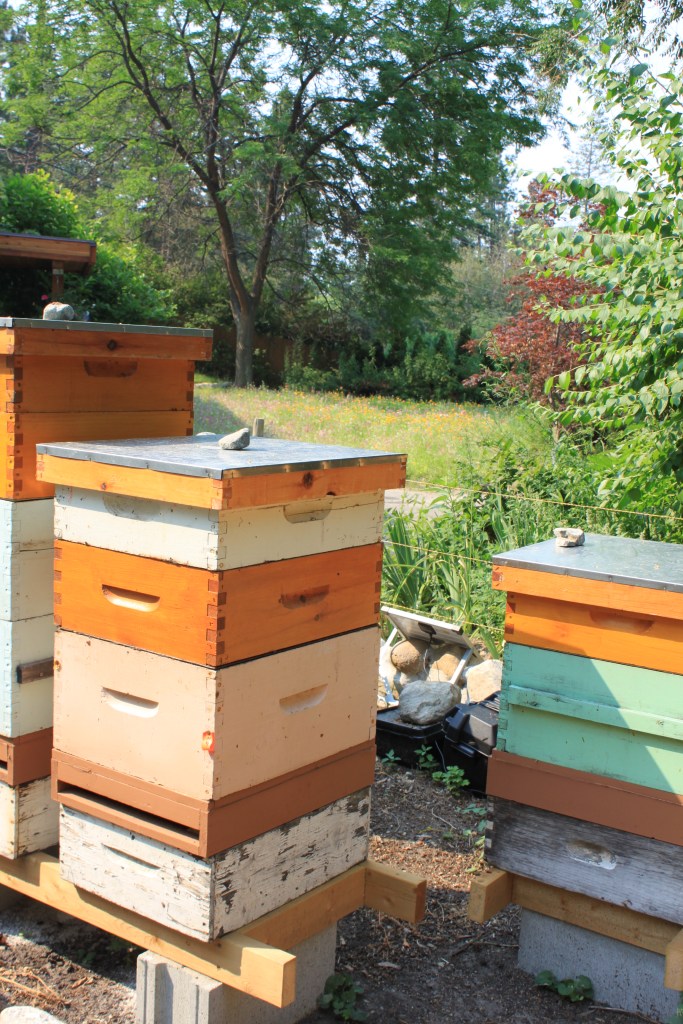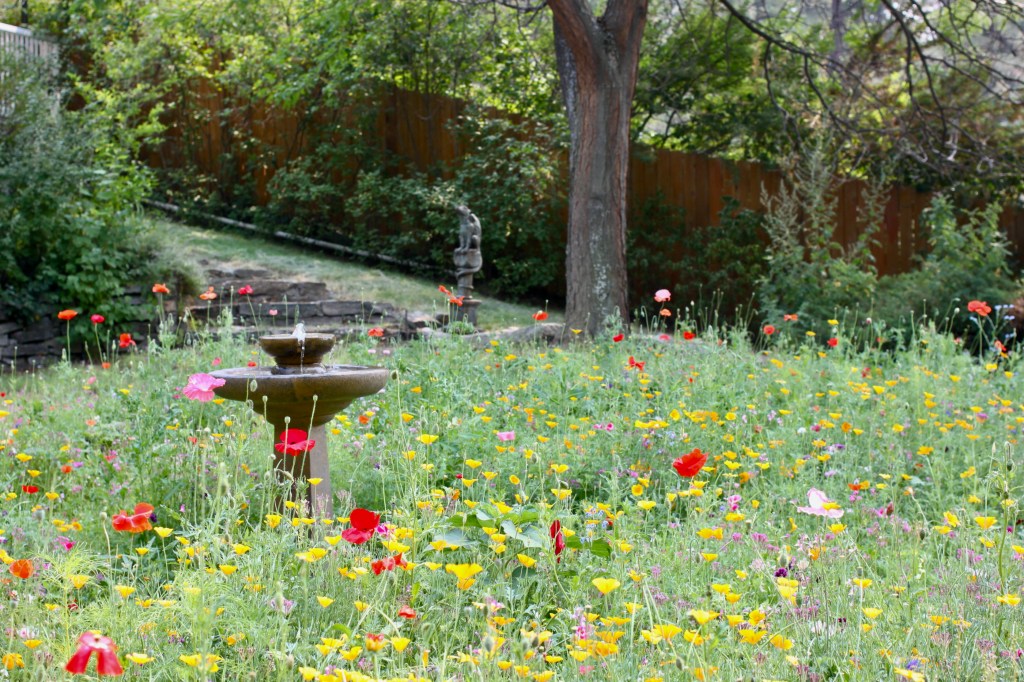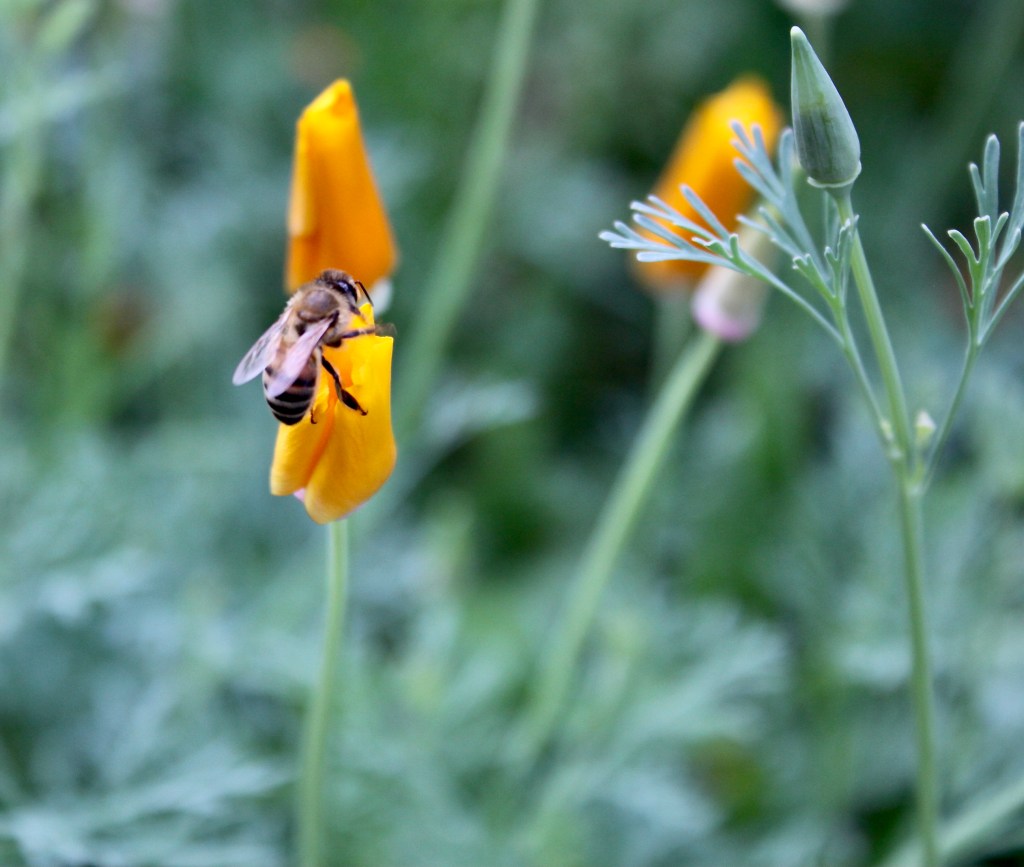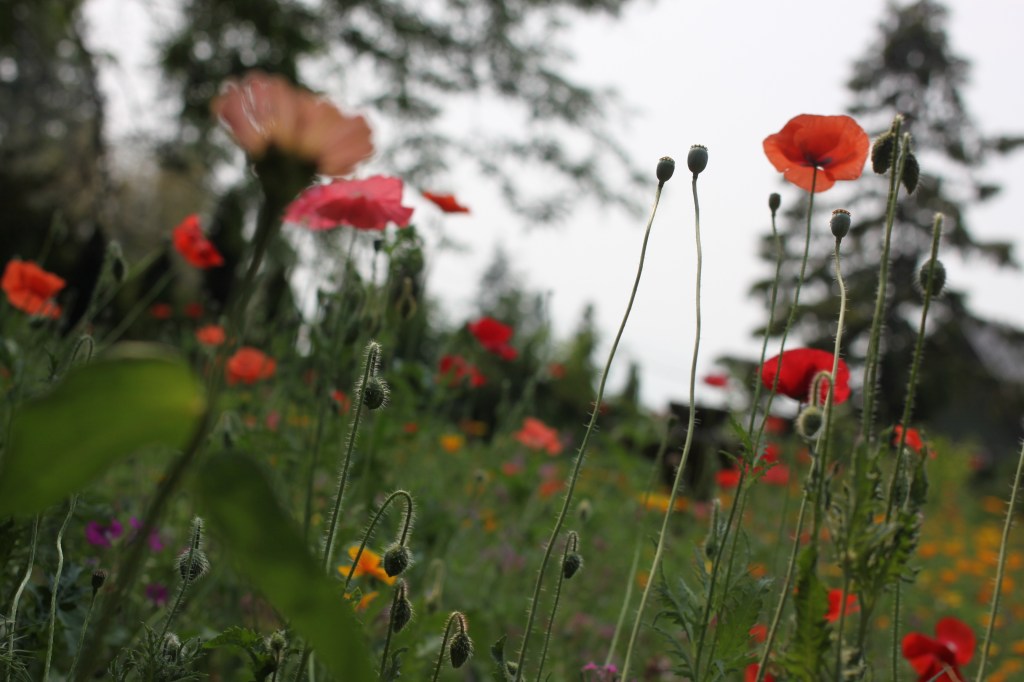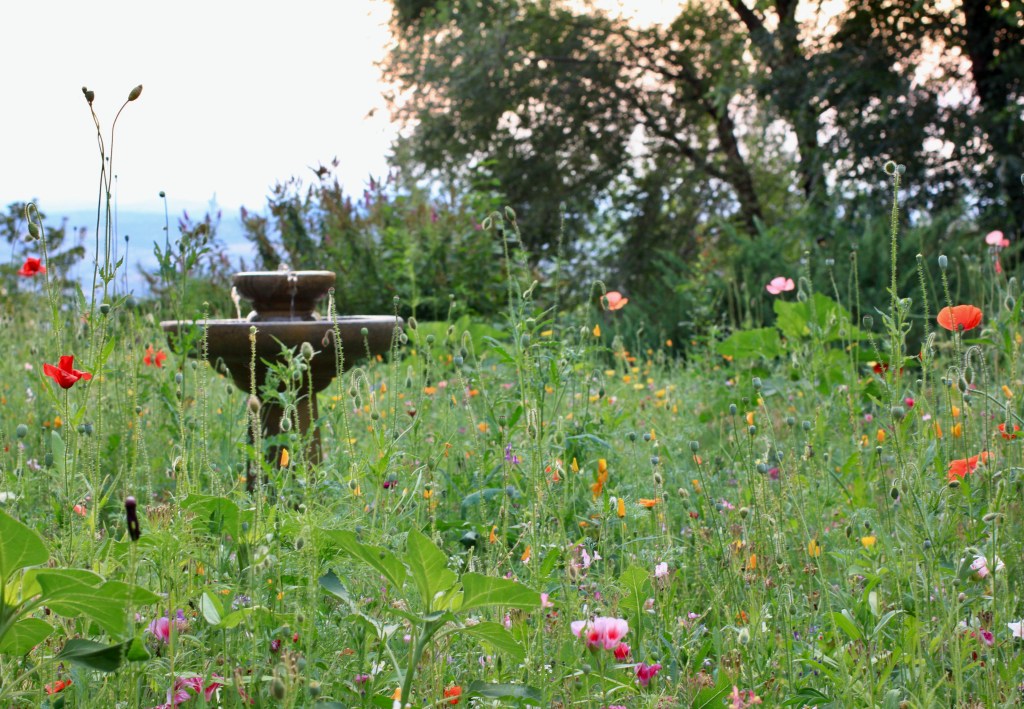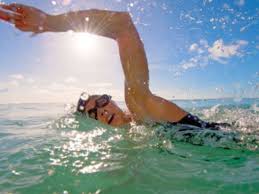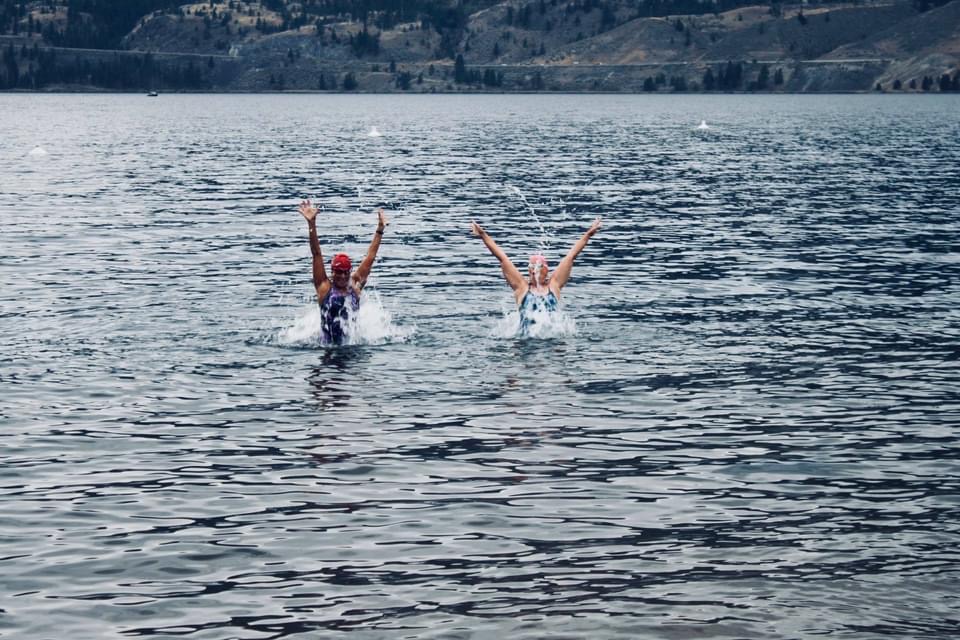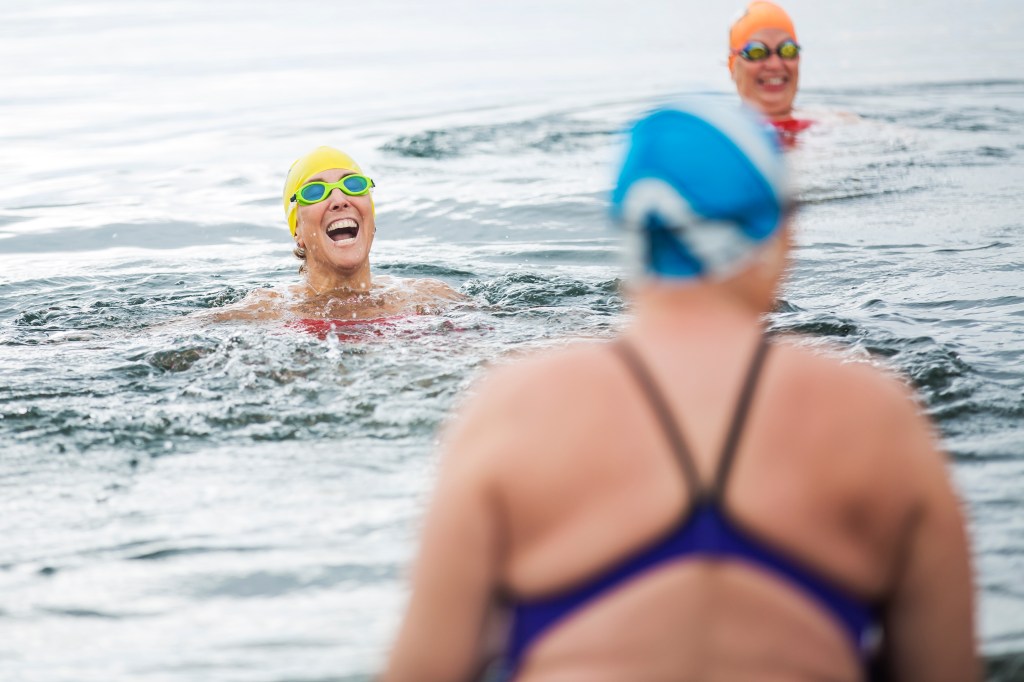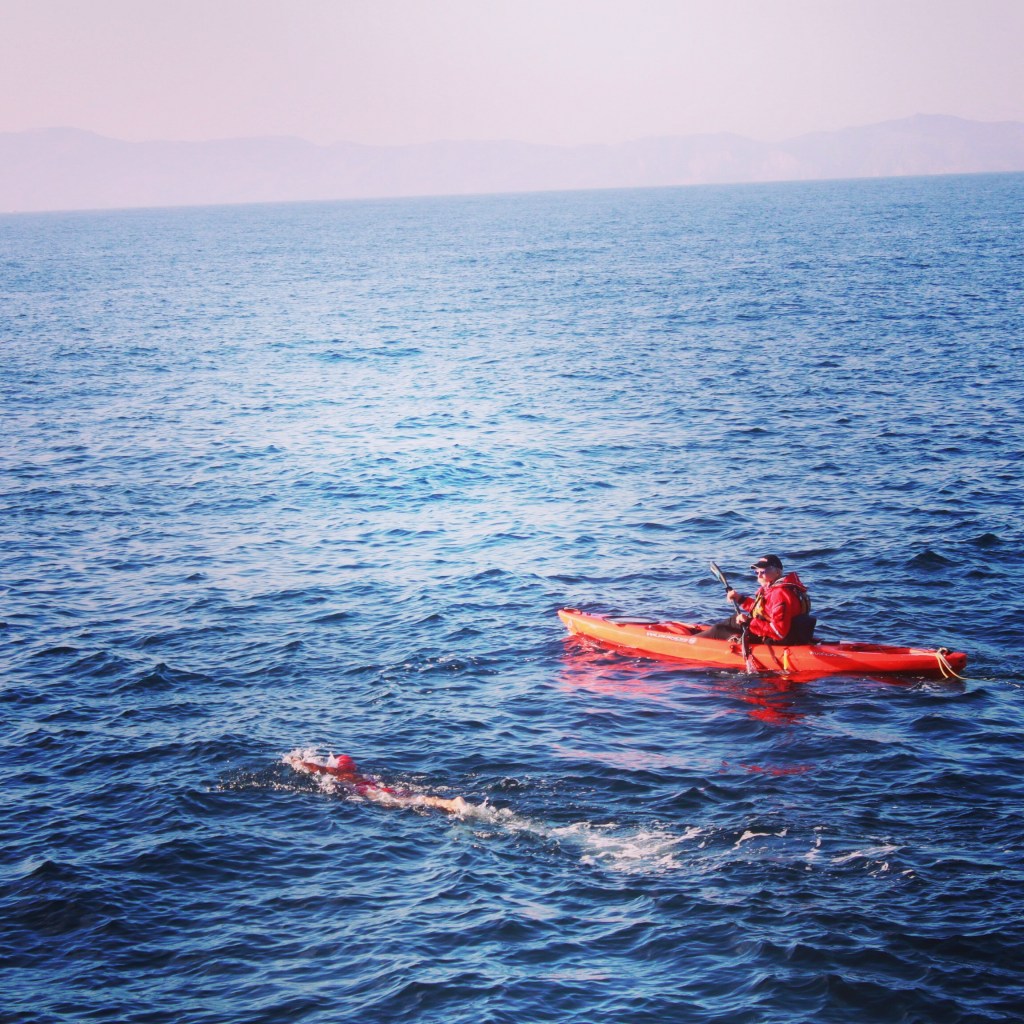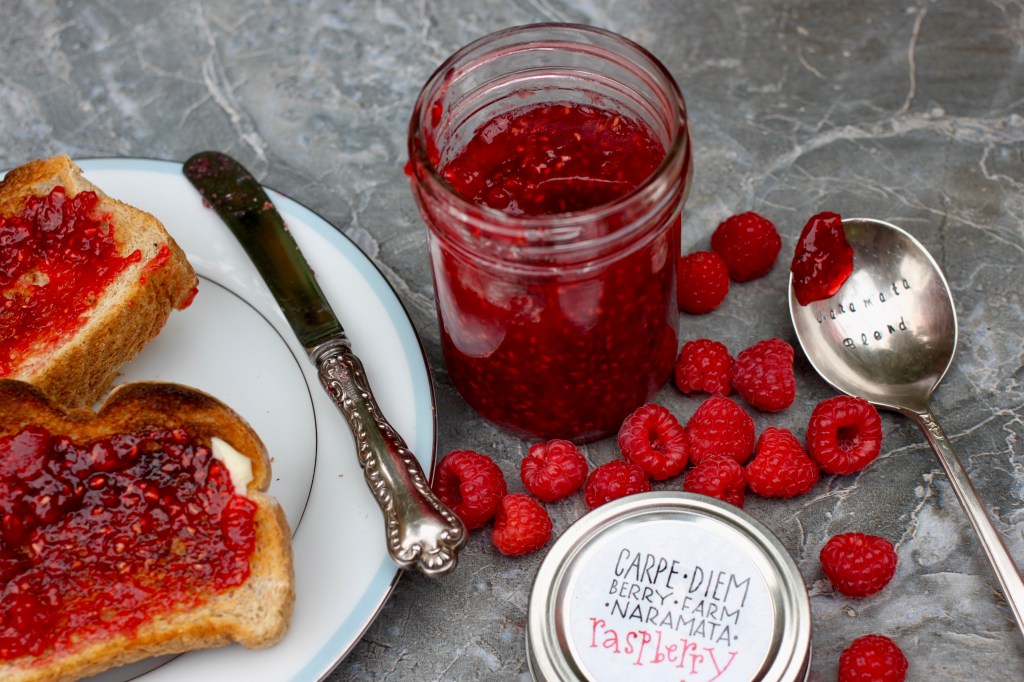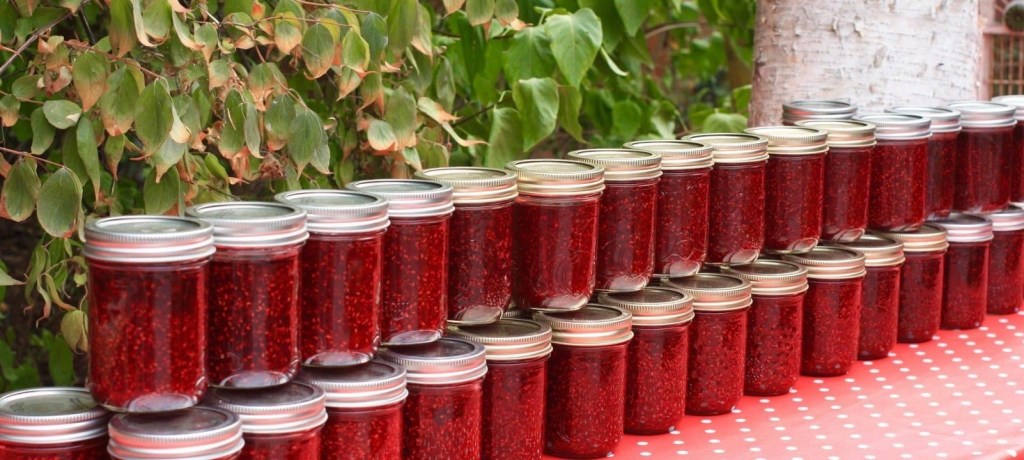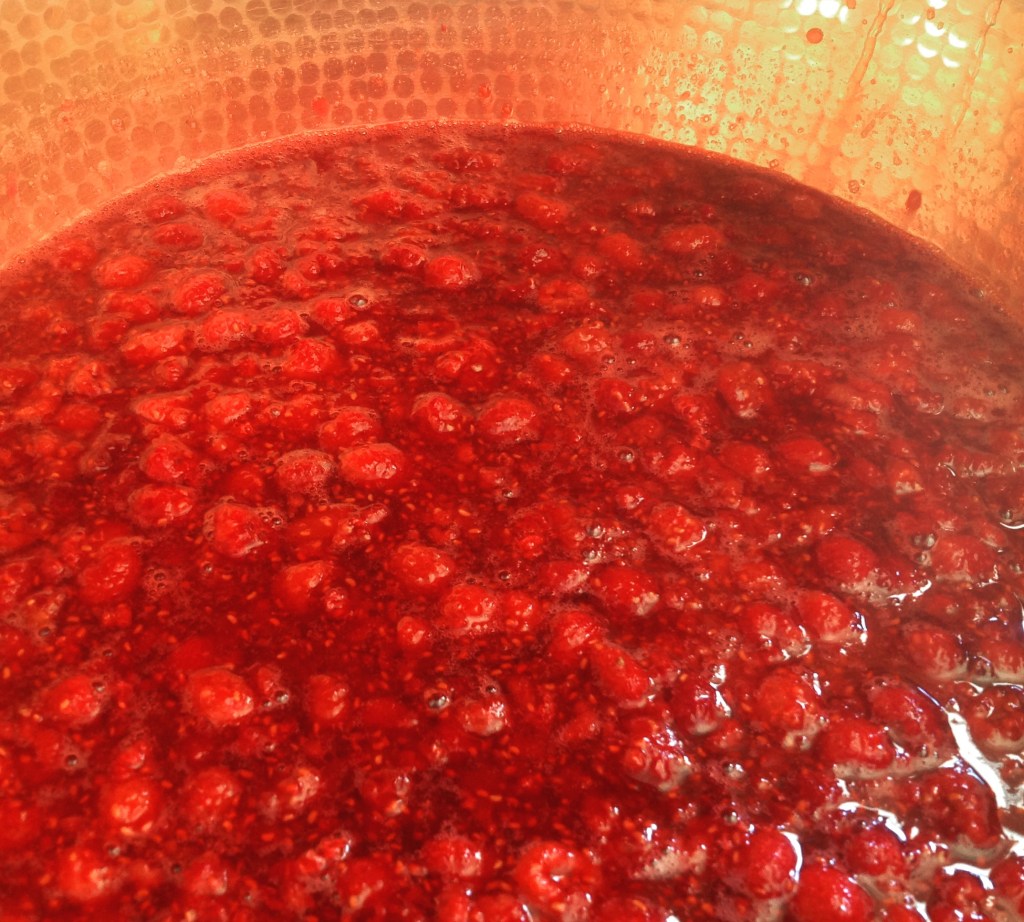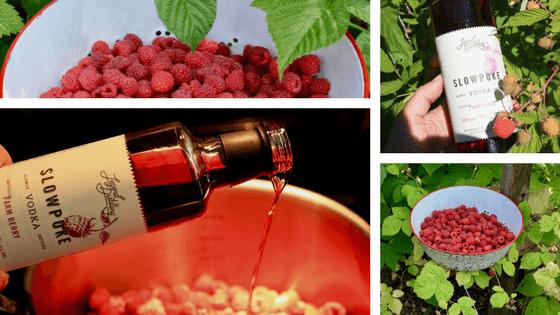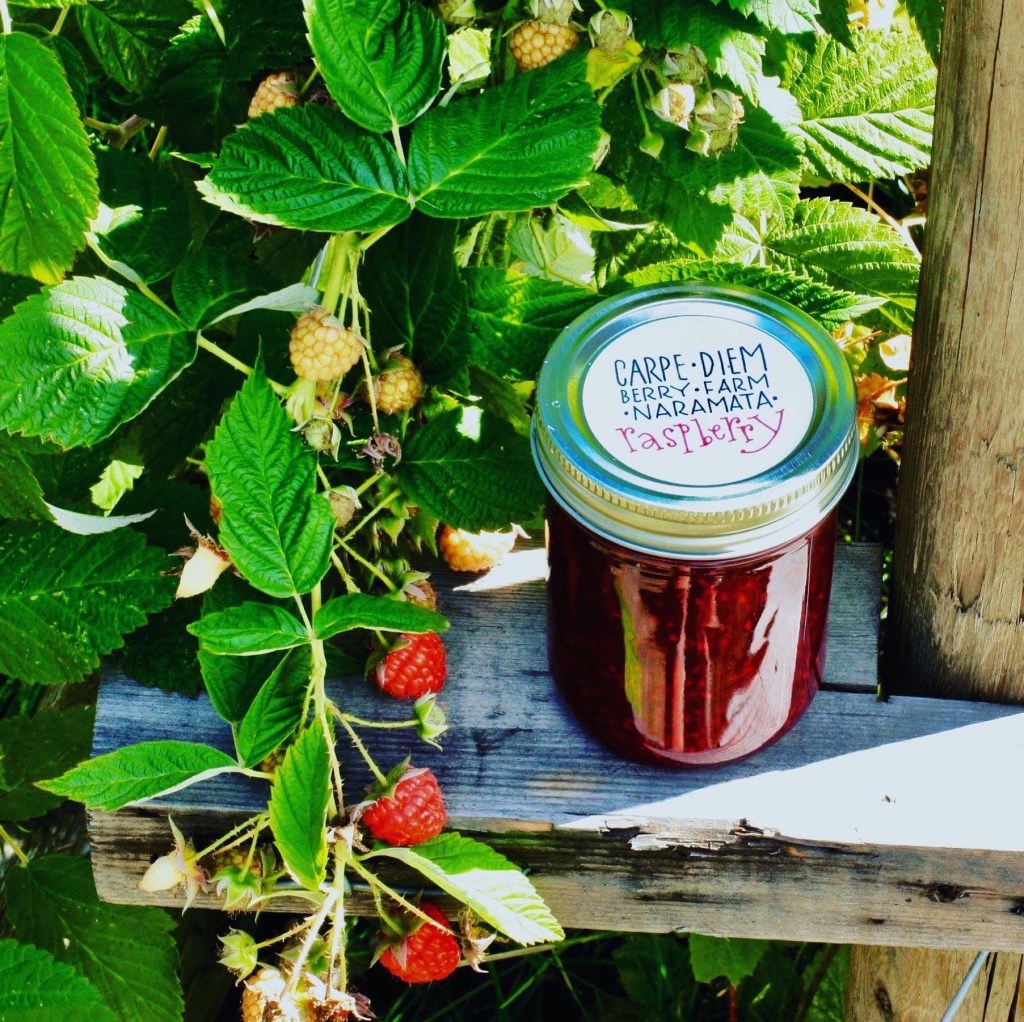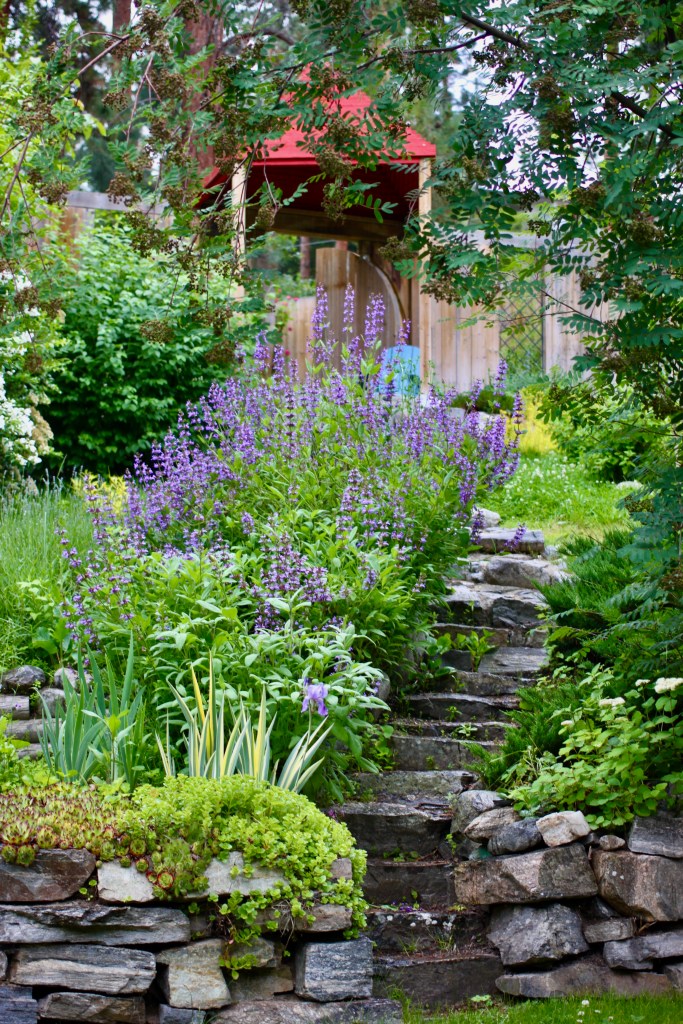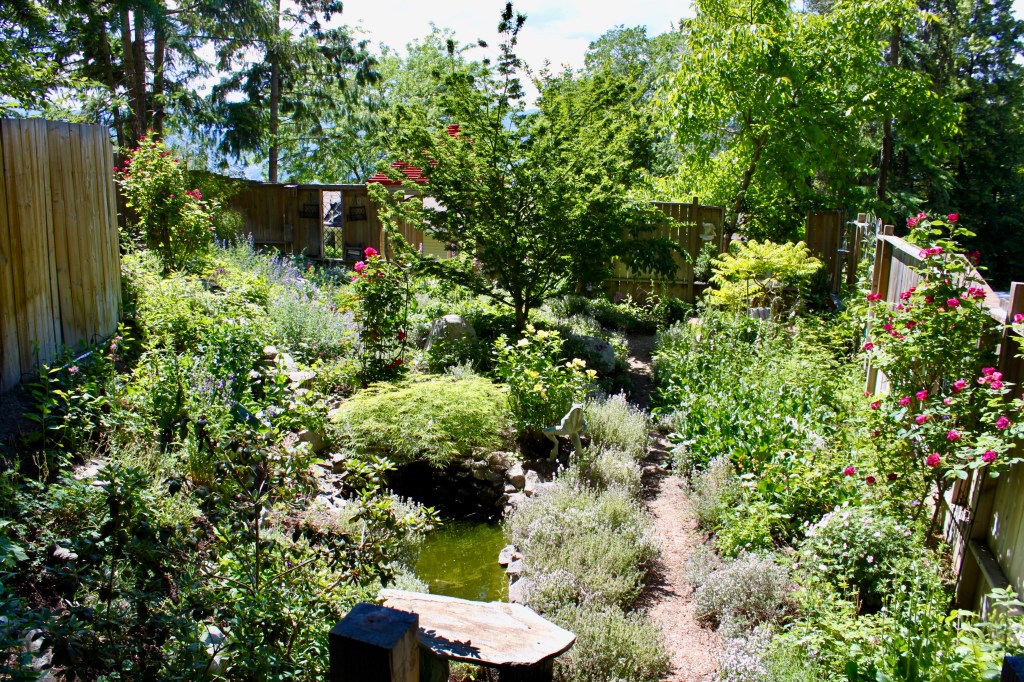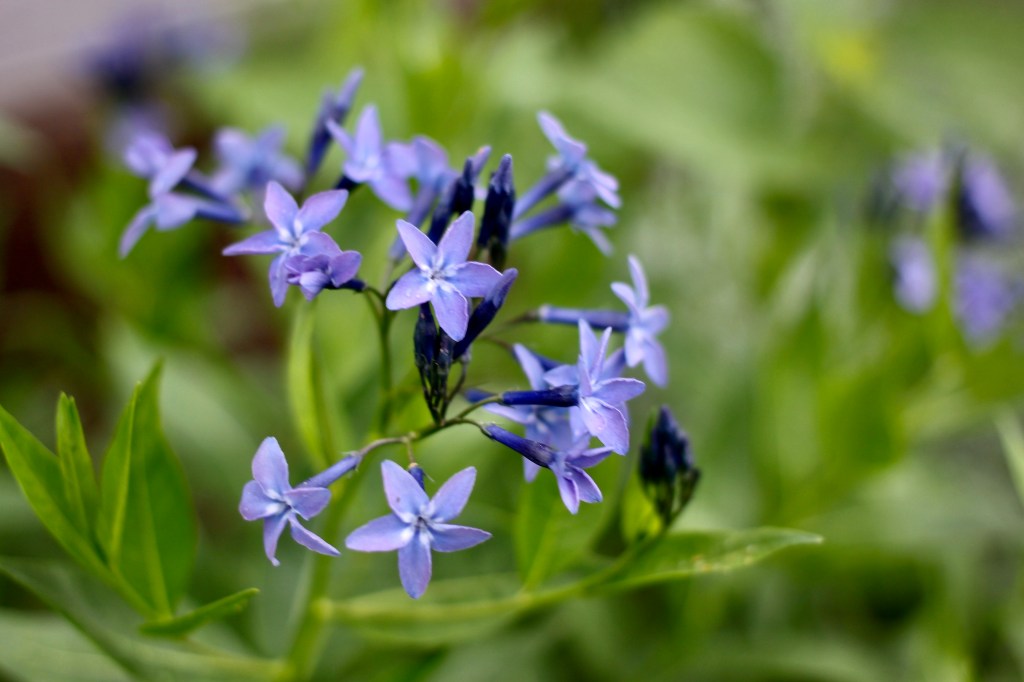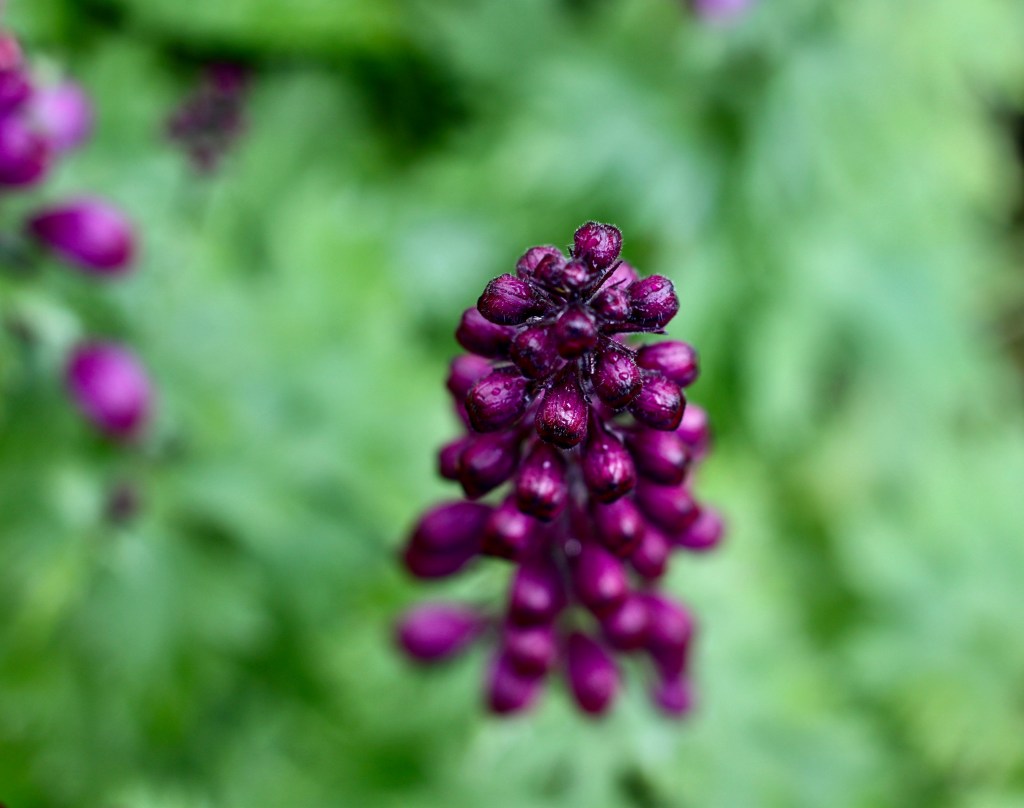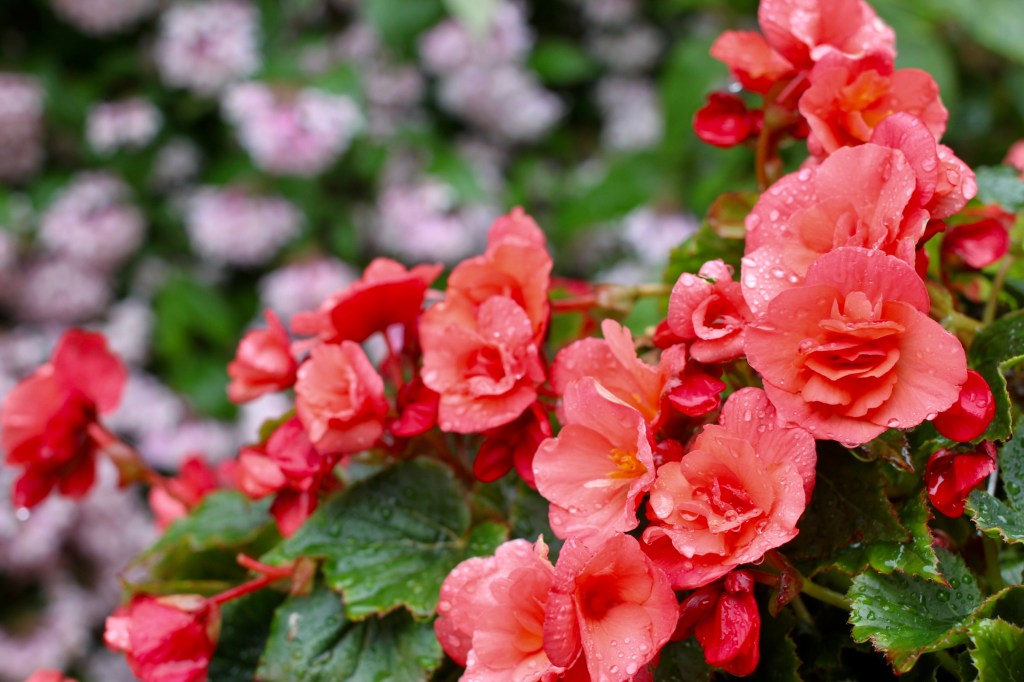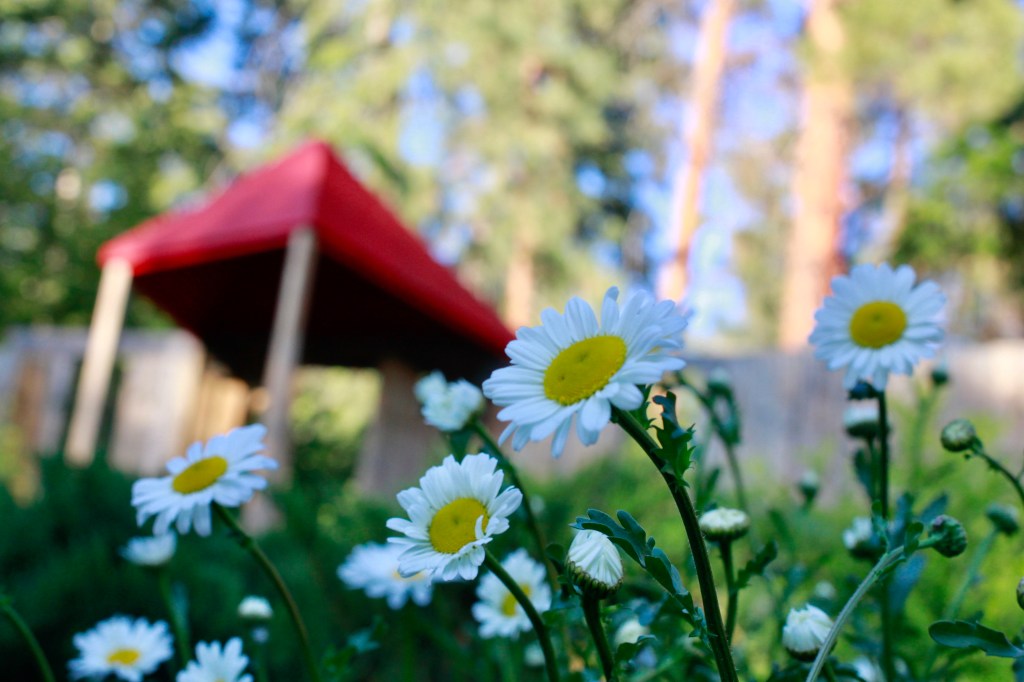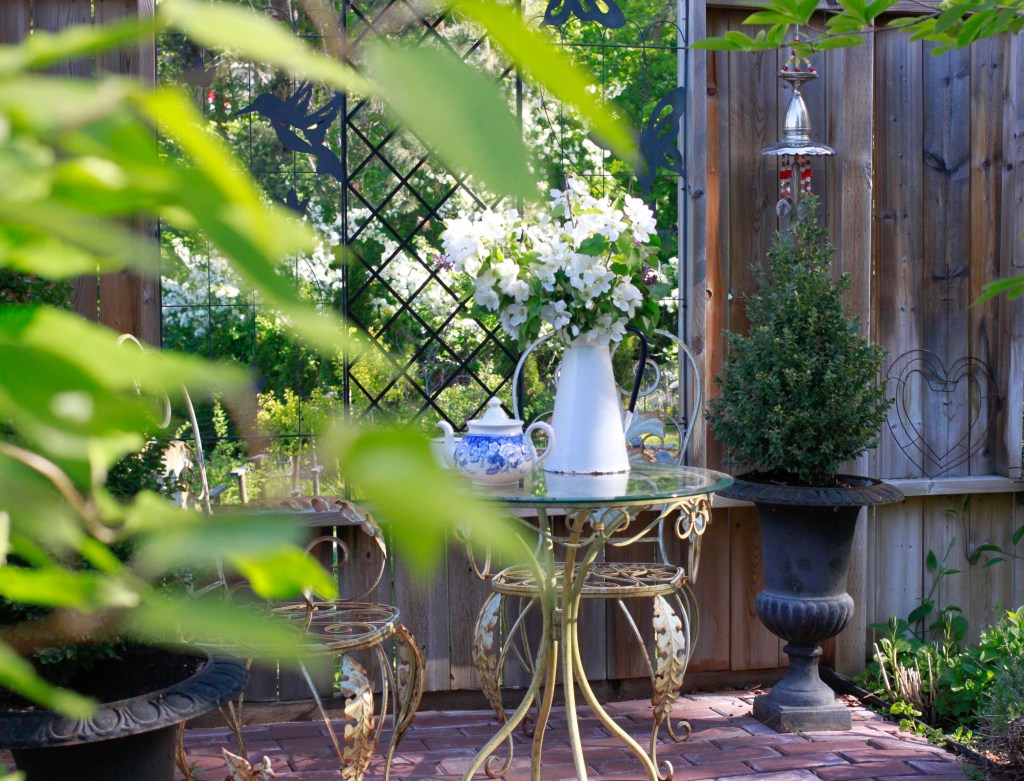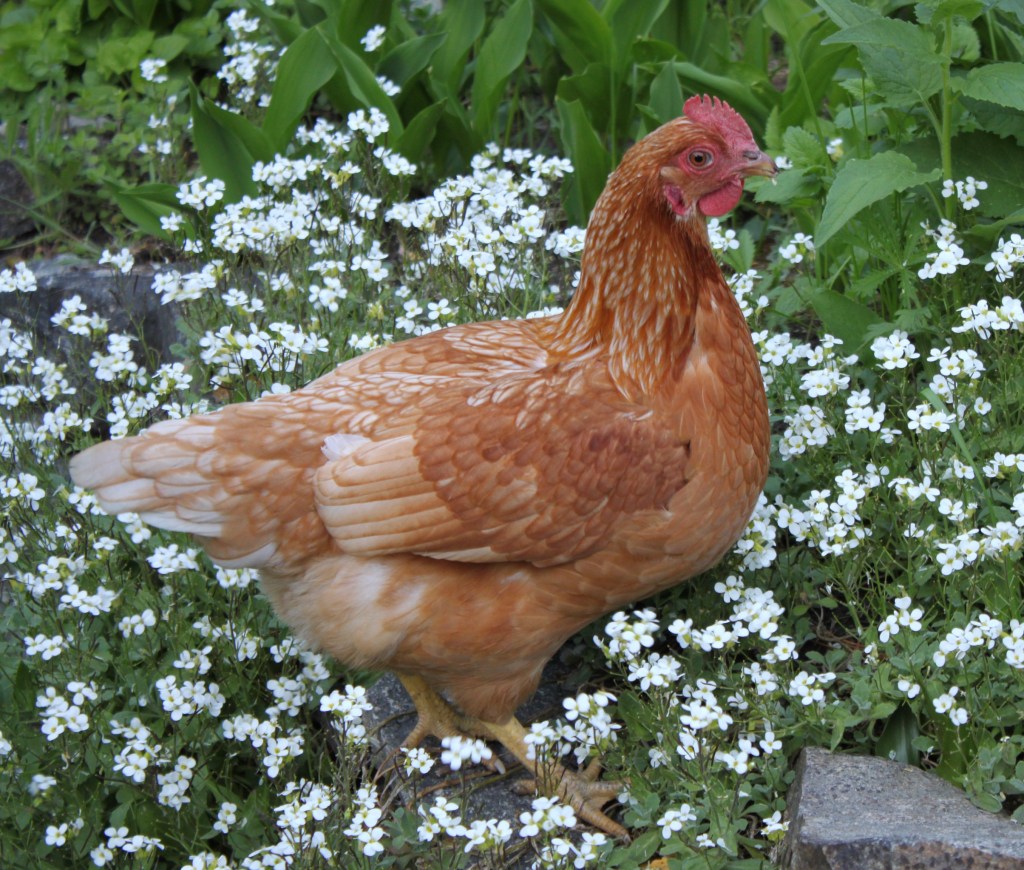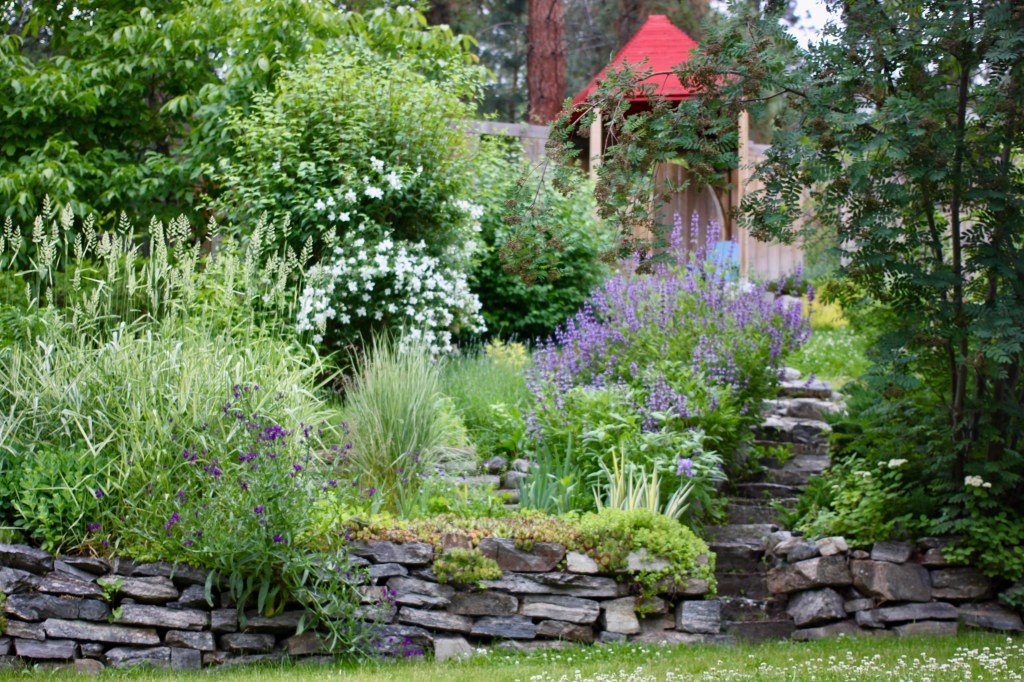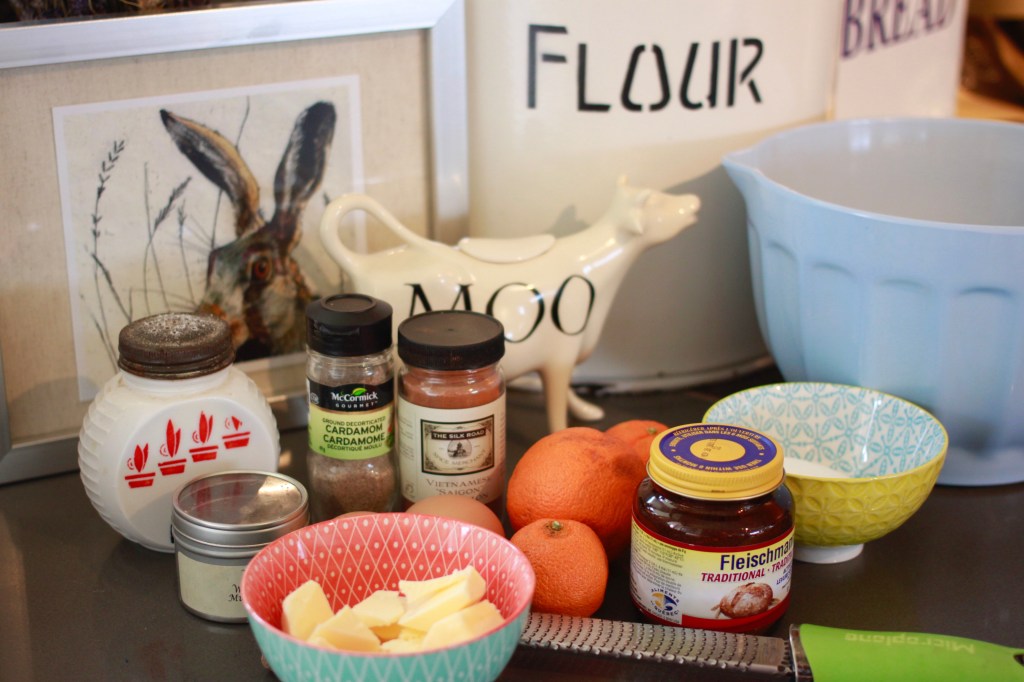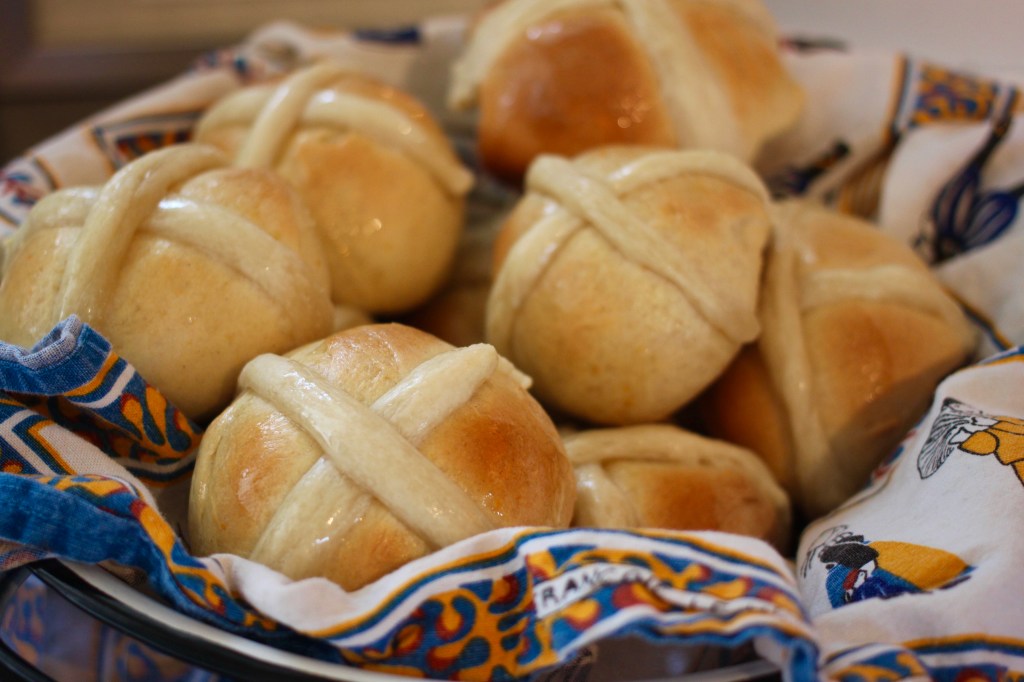or Nothing great is easy
Sometimes it’s so hard that it turns out not so great…
Sometimes it’s so hard that it takes two years to face writing the blog post about it all.

Sitting on the bed at the Churchill Guest House in Dover, England, in my swim robe, still shivering, tears streaming down my face, husband Al says, “It’s OK. Really. We will find you a new boat pilot, sign you up and you will try again.” This is no easy thing to propose. Three years, thousands of dollars, another trip to Europe…
Here is how it started. Looking for a really tough challenge, I convinced Jan Johnston to attempt a two-person relay of the English Channel in June of 2023. The swim came on the heels of a successful swim of the English Channel with a six-person team, the Crazy Canucks in 2016. The Crazies then took on the Catalina Channel in 2019 and finished the task becoming the first Canadian team to swim from Catalina to mainland California. A duo at 67 and Jan at 60 seemed pretty possible.
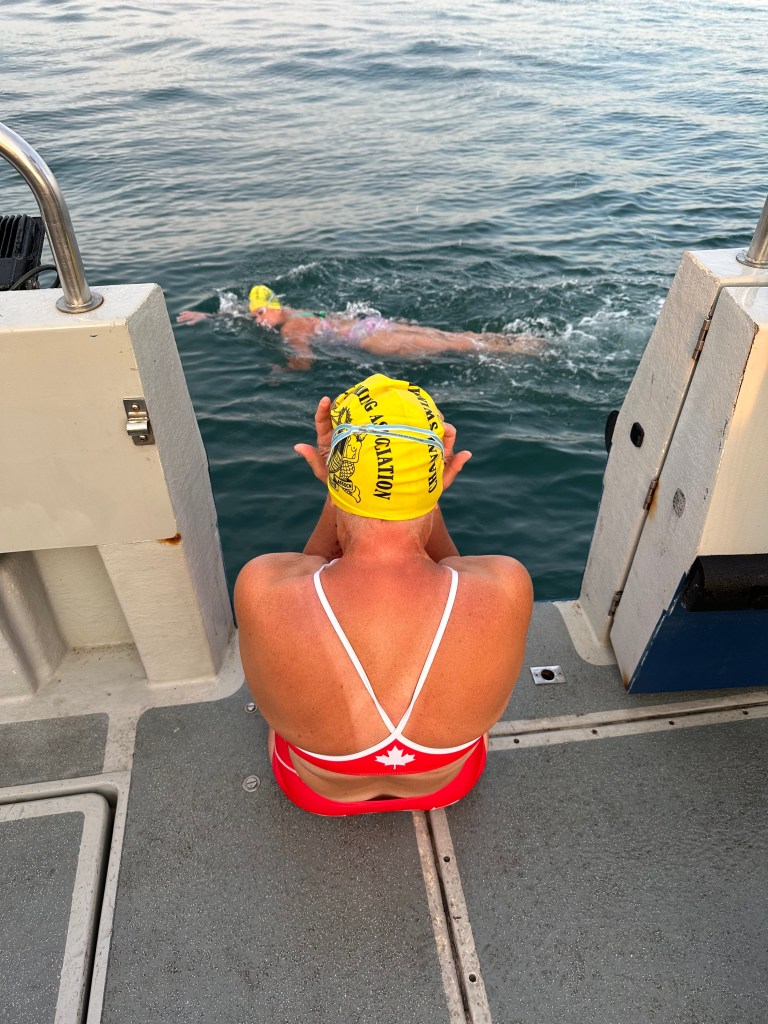
Jan in the water and me getting ready for my third shift.
Our June slot to swim the Channel was not our preferred option as its very bloody cold (14C or below) but with booking three years before a swim due to high demand and limited pilot boats, the number one slot on the tide for Viking Princess II was June or nothing until 2024.
In my research at the time Channel teams of two are pretty rare… at the time only 33 duos had made the England to France crossing and of that number only a handful had been attempted in June. I guess the thinking is you might as well do a solo if you are going to do that much swimming. The other factor, a pretty big one, is the after drop. Swimmers alternate one hour in the drink, one on the boat. An hour is not long to warm up again after 12C.
Jan and I had no illusions that we could swim the approximately 50 kilometres solo but thought with a careful training plan, dedication and lots of cold water acclimatization we could just pull it off swimming about 25 k each in alternating hours for a total of 13 to 16 hours.
We arrived in Dover feeling ready and confident. Our daughter Lizzie came for the launch of our adventure as did husband Al and Jan’s husband Jamie. Fish and chips, attempts to spot France across the Channel, draft beer and lots of laughs. Then my confidence began eroding.

While waiting for the weather to improve and the call from our boat pilot Reg that it was go time, a young, strong, firefighter died after loosing contact with his support boat. He was in his 40s. We got the go ahead for our attempt the very next day. The Titan submersible was also missing at the time and the fate of its occupants unknown. A third, much less serious mind messer was the practice swims we had been doing in Dover Harbour that seemed cool but tolerable. It wasn’t the cold it was the jellyfish that got to me. Our 2016 relay was full of the nasty buggers and I got stung on the neck but… I couldn’t see them. I had goggle issues that landed me with an old pair that I could barely see out of. Learning my lesson I had nice clear goggles on and couldn’t believe how alarmed I was by them. As Reg so colourfully said, “It’s not the big white ones you have to worry about it’s the little purple f****ers that sting like hell.”

Jan and I boarding the Viking Princess II at 3 a.m.
We got the call from Reg and it went something like this. “Hey Reg, I’m a bit nervous after the fellow drowning yesterday.” Reg replied, “This is a dangerous sport and it has big risks.”
Five minutes later Reg called back and I could hear his wife in the background. It was clear she had convinced him to call us back. “You will be alright love. We have cameras on the boat on the swimmers at all times. We will keep a good watch.”
Jan and I and our partners sat in the lounge and discussed my mental wobbles before we had to gather our gear and head out into the middle of the night to the boat. “I do this for fun and right now this doesn’t seem too fun,” I said. “I don’t want to end up in the hospital or dead.” Sounds a bit overdramatic but it was the head space I was in… Jan and Jamie said they would respect my wishes but said we had trained hard, we were prepared, we had spent years and lots of money and they were game to give it a go. So go we went.
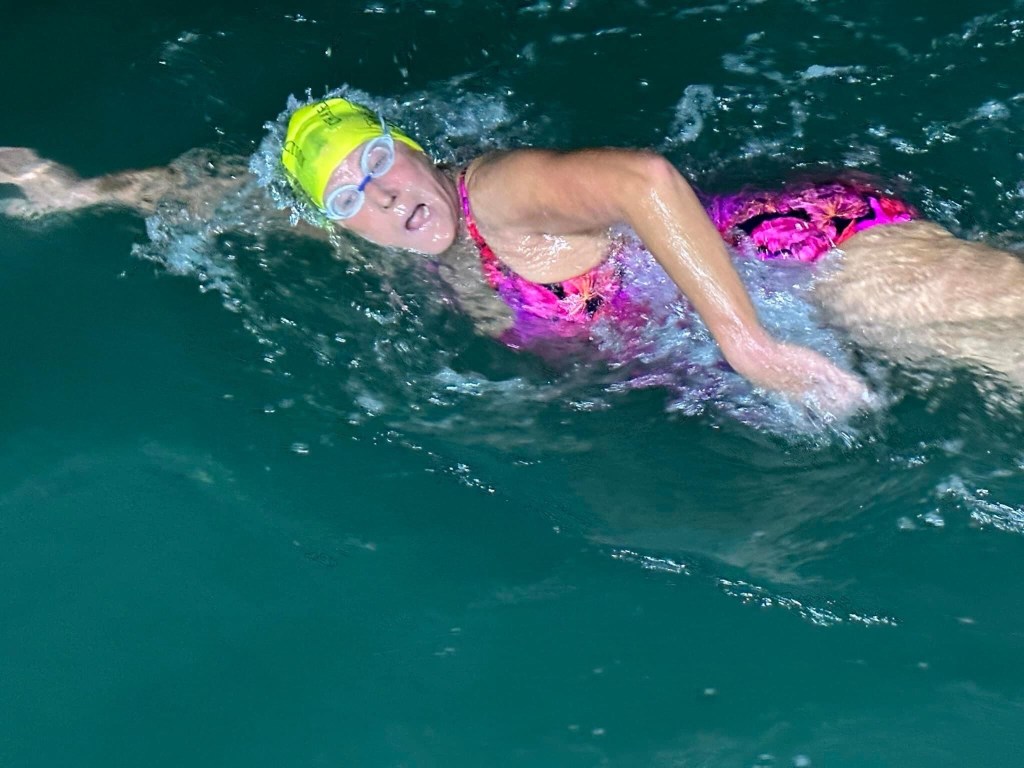
Jan in Channel in our first hour.
We had our first successful crossing with Reg and his brother Ray, famous Channel boat pilots so felt confident in their care but they seemed gruffer, less patient and less encouraging than they had a decade earlier. There was no warming up in the boats inner cabin during our hour shifts out of the water, a lot of talk about how fast we could do the crossing as it felt like they didn’t want to be out for hours and hours and hours and what felt like terse explanations of how the shift changes would be handled. I was mildly disappointed they didn’t remember us from our 2016 swim as they hadn’t piloted Canadians before and we took them for a big pub after party.
Brave Jan took the first shift from rocky Shakespeare Beach in the pitch black and stroked steadily for her hour. After a fumbling shift change (the boat is equipped with an elevator type device to re-board) I plunged in and felt calmer as my hour progressed. The jellies were EVERYWHERE but in the general crazy stress of the whole experience they became just a factor that could be largely ignored. The water felt cold but nothing I couldn’t handle.
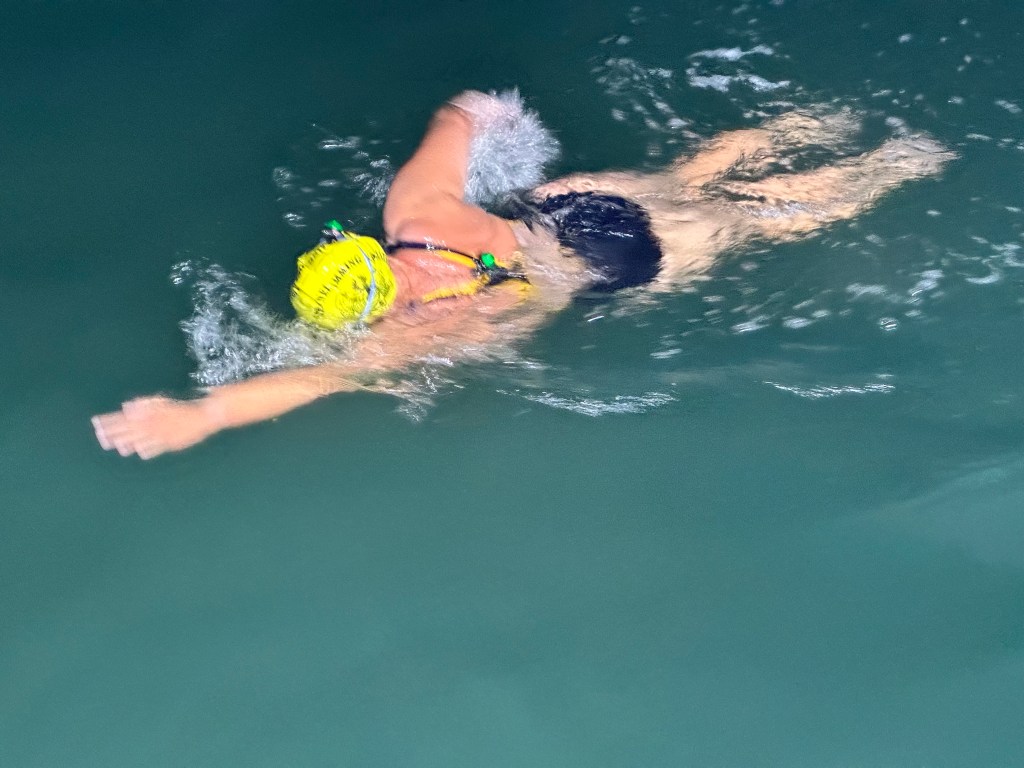
Me on my first shift. The green light on my back is to make me more visible.
Back out on the boat I was cold. I changed into a dry suit, bundled up and sat in a miserable stiff shivering block. The thermos of warm electrolytes tasty absolutely horrid. We hadn’t thought to wash the borrowed thermoses out so mistake number one.
I assumed Jan was struggling with the cold equally as we had no communication with each other. My second turn I got down to business and took advantage of the calm seas to make some tracks. Reg began to look more hopeful that we would make the crossing in a reasonable time.
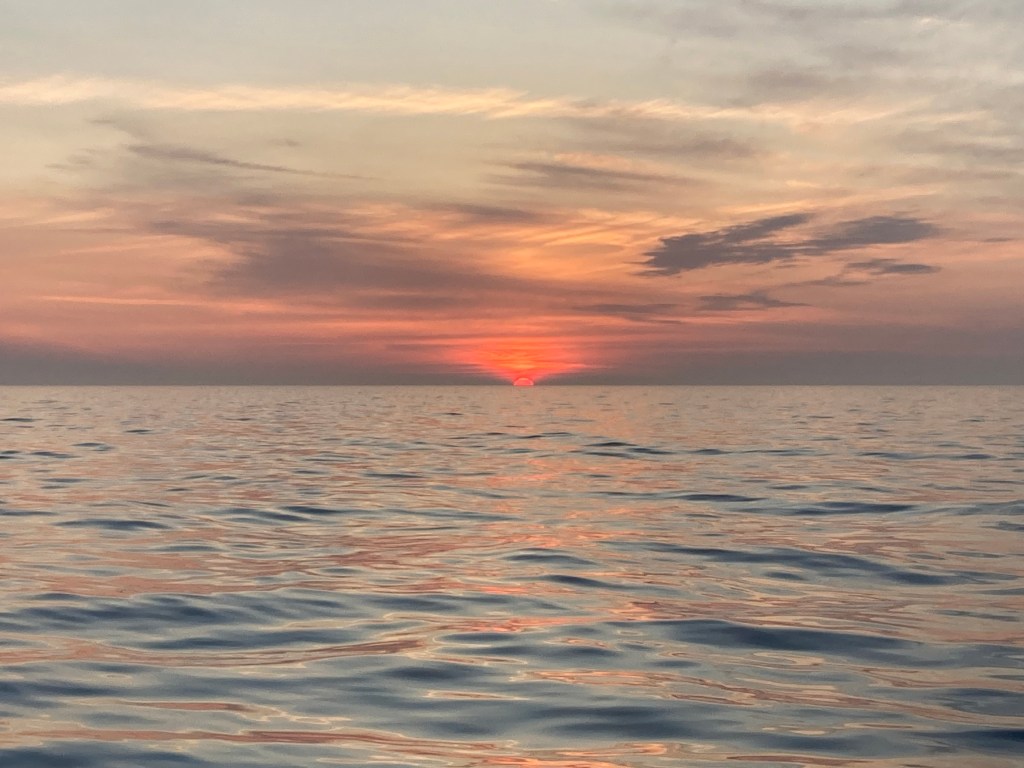
Seas this calm are a Channel swimmer’s dream.
My second shift in the calm seas with the sun breaking through was good until about the halfway mark where the cold (12C) started to break into my focus. By the last 15 minutes I was actually shivering. To combat it I picked up the pace. Normally in these swims at the point you start looking forward to a warm drink, your swim robe and getting more comfortable once your hour is up. I had a sinking feeling that the after drop would be bad. It’s the phenomenon when your core body temperature continues to drop after you’ve exited cold water. The cold blood in your limbs returns to your core and it’s nasty.
The hour break was miserable, even more than I anticipated. When you get that cold you don’t feel like moving which you definitely should. I only managed a few sips of the thermos, clung to the hot water bottle and shivered uncontrollably.
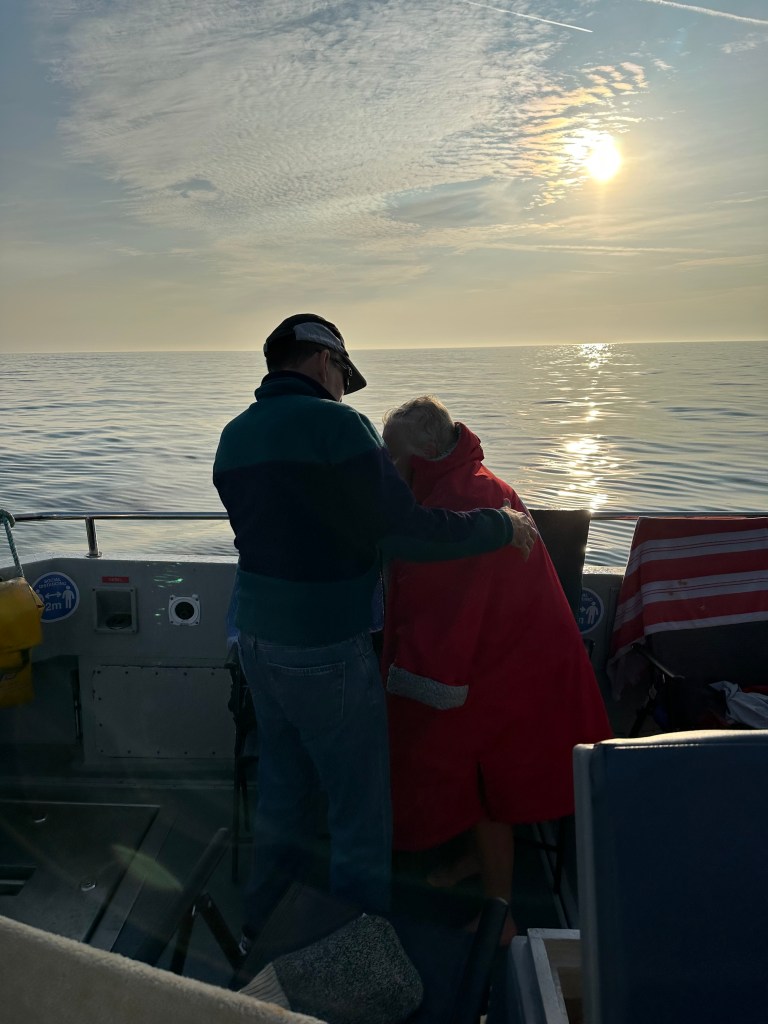
Al is my rock.
At this point its becoming obvious that Jan is handling the cold better than me. I spotted her getting ready for her shift while I was in the water. She had her robe off and was bouncing around. I was still cold and shivering after my hour breaks. In my fog this difference didn’t register.
In I went for my third hour. At this point we are approaching the halfway point in the Channel and our pace was holding. After only a short while I began to shiver. This was new to me. Shivering while swimming is your body’s natural reaction to cold as it tries to generate heat through muscle contractions. In open water it signals potential hypothermia.
I didn’t know that it was a serious sign but I did know I had never shivered while swimming.
I started counting strokes knowing roughly 100 strokes is 100 metres so another two minutes gone. Counting strokes is a sign of a big effort for me and as a way of distracting myself from the time passing. Again, the thought of the hour on the boat provided no comfort but a worsening dread.
I knew I was at my limit. I made it through the hour somehow and got back on the boat. The poor guy who disappeared the day before likely succumbed from hypothermia. I thought about Al and my kids. I decided to tell Al and Jamie I was done. Al knows me. He knows I’m tough. He knew it was time. Jamie suggested I give it awhile to see if I can come around. “Jan is fine in there.” I assumed she was feeling exactly as I was and wasn’t fine at all.
This is all I can bring myself to write about this. For two years I’ve wondered what I could have done differently. More cold water training, forcing myself to move around more on the boat and on and on. I’m sorry I let Jan down. I’m so thankful for next year’s Crazy Canucks five-person relay and with time I’ve given myself some grace. “Nothing great is easy,” said Captain Webb, the first to swim the Channel. It’s always a balancing act between ability, will and a big challenge and this time I came up short or with grace this time I made the right call to quit before I got in real trouble. The next victory will be even sweeter.

Jan was gracious about my call to quit the swim. For her, it was a victory as she is one of the few to experience what it’s like to attempt a Channel swim. She couldn’t be persuaded to give it another go with all the sacrifices she made.
Crazy Canucks III made up of me, Dionne, Deb, Kate and Tina and we have a swim window of August 27 to September 3 2026 on the Anastasia with boat pilot Eddie Spelling. (Eddie piloted the swim where the poor firefighter succumbed but he also took Sarah Thomas on the four-way that no-one thought could ever been done.) Deb has swum the triple crown which includes a solo of the English Channel, Catalina and Around Manhattan and is going for the fun of the team aspect, some nostalgia perhaps and seeing part of the swim from the boat, Dionne is tempted to try a solo and is going to see what’s involved, Kate, also an experienced open water swimmer has swum it in a relay 19 years ago, Tina is an all around adventurer with many athletic achievements on her resume looking for some new “fun”. I’m going because Al said I could.
I’m happy we are going in August when the Channel is at it’s “warmest”, a relatively balmy 16-18C. I’m happy for more team buddies so more time to get warm. It’s not a gimme by any means as we need the right conditions for the swim during our swim window. Sometimes the weather gods are not in your favour and you don’t even get an attempt. Seasickness is also a bit of a factor as are those damn purple jellies. With a bit of luck I may get my 70th birthday present and it will be great. I’m grateful for Al, my kids and the amazing group of women who have signed up for the adventure.

